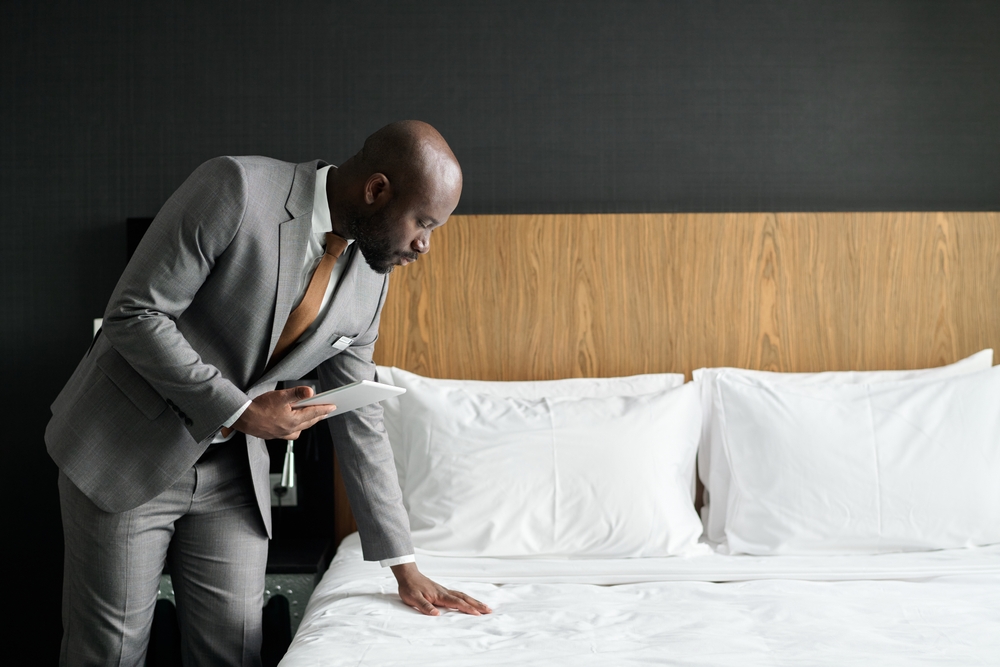Living with less might be the answer to having more, more time, more focus, more joy. As modern life grows increasingly complex, many Americans are turning to minimalism as a path toward greater fulfillment and reduced stress. Research shows that decluttering physical spaces can transform mental landscapes, offering surprising benefits that extend far beyond tidy shelves and organized closets.
The psychology behind accumulation
The average American home contains approximately 300,000 items, according to research from the University of California, Los Angeles. This abundance of possessions often creates what psychologists call “material anxiety” – the stress associated with maintaining, organizing and mentally cataloging our belongings.
Psychology researchers at the University of British Columbia found that material possessions often fail to deliver the happiness consumers expect. Their studies indicate that experiences, rather than objects, provide more lasting satisfaction and positive memories. This disconnect between expectation and reality drives the growing appeal of minimalist philosophies.
7 transformative benefits of minimalism
Reduced stress and anxiety Living in cluttered environments significantly increases cortisol levels, the body’s primary stress hormone. Stanford University researchers found that participants who described their homes as “cluttered” exhibited higher levels of depression and fatigue than those who described their living spaces as “restful” and “restorative.”
Minimalism creates physical environments that allow the mind to rest rather than constantly process visual stimuli. This reduction in visual noise translates directly to decreased cognitive load and improved mental wellbeing.
Increased productivity and focus Princeton University Neuroscience Institute research demonstrates that visual clutter competes for attention, reducing focus and limiting working memory. Their studies reveal that people working in organized spaces show 23% improved concentration compared to those in cluttered environments.
When unnecessary possessions are removed, both physical and digital spaces become conducive to sustained attention and deeper work. Many productivity experts now recommend workspace decluttering as a fundamental step toward improved performance.
Financial freedom The minimalist approach naturally reduces consumption, creating substantial financial benefits. The average American household spends $1,700 annually on clothing and $8,000 on home furnishings and equipment, according to the Bureau of Labor Statistics.
By adopting minimalist principles, many practitioners report saving 25-40% of their previous expenditures, funds that can be redirected toward experiences, education, or financial security.
Environmental impact The environmental footprint of consumer culture is increasingly concerning. Americans throw away 81 pounds of clothing per person annually, while electronics and furniture contribute millions of tons to landfills.
Minimalism directly addresses this issue by encouraging thoughtful consumption. When purchases are intentional rather than impulsive, overall waste decreases significantly.
Improved relationships Relationships often benefit when material concerns diminish. Research from the Journal of Consumer Research found that people who prioritize experiences over possessions report higher satisfaction in interpersonal connections.
With less emphasis on acquisition and maintenance of belongings, more time and mental energy becomes available for meaningful social interactions and relationship development.
Enhanced spatial aesthetics Living spaces transform visually when unnecessary items are removed. Interior designers note that rooms appear larger, lighting improves, and architectural features become more prominent when clutter is eliminated.
This aesthetic enhancement creates environments that feel more intentional and peaceful, contributing to overall wellbeing and satisfaction with living spaces.
Mental clarity and decision-making Decision fatigue is a well-documented psychological phenomenon in which the quality of decisions deteriorates after making many consecutive choices. With fewer possessions requiring attention, minimalists report improved decision-making in professional and personal contexts.
Neuropsychological studies support this connection, showing that visual simplicity correlates with cognitive clarity and improved executive function.
Practical steps toward minimalist living
Transitioning to minimalism doesn’t require extreme measures. Experts recommend beginning with small, manageable areas rather than attempting complete home transformations.
The “one-in, one-out” rule provides a sustainable approach for preventing accumulation. For every new item that enters the home, one existing item must leave. This simple practice maintains equilibrium while allowing for thoughtful acquisitions.
Digital minimalism represents another frontier in decluttering. Technology researchers advocate systematic reduction of digital consumption, including social media, apps, and email subscriptions that demand attention without providing proportional value.
The future of minimalism
The minimalist movement continues to evolve beyond material possessions. Time minimalism, focusing on elimination of unnecessary commitments, and attention minimalism, carefully curating information consumption, represent expanding frontiers in the philosophy.
As economic and environmental pressures increase, minimalism offers practical solutions for individual wellbeing while addressing larger societal challenges. The real magic of minimalism may lie not in what it removes, but in what it reveals when the unnecessary falls away.


















